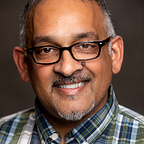Education Has Ruined Many Lives By Ruining Algebra
There is no more discussed topic in mathematics than algebra — especially in the United States. Unfortunately, the discussions this past decade have centred around the “need” for algebra and when students should be taking Algebra 1.
The issue of who needs algebra got nationwide attention when Andrew Hacker wrote the following article in the New York Times in 2012.
If you distill the article down to its key ideas, Hacker argues through a lens of usefulness and success — hardly things which champion the logistic beauty of algebra. But, strangely, I do agree with Hacker. Not that the idea of algebra should be rendered easily disposable, but that algebra in its current state of high school isolation with cliched exploration/problems is something that has a declining currency.
Any math story which makes it to mainstream media often explores stereotypical ideas of mathematical concern — homework, false ideas of Common Core, and of course, the **usefulness** of algebra.
Going down the utility/practicality road with mathematics is selling it wrong and horribly short — I am still waiting to apply my understanding of the tragedy of King Lear to my daily routine of housework, shopping, and raising kids.
The problem has never been with algebra per se, it has to do with how it has been incorrectly isolated and re-branded as a course of study reserved for teenagers — usually disgruntled and apathetic teenagers.
If we trace the breadcrumbs back, the reason I think algebra has lacked imagination and creativity, to be seen more as a way of thinking then a set of rules and procedures to solve often banal problems of mysterious ages and numbers of animal legs in a barn, is that arithmetic is not given the time and respect in elementary school.
My mentor, Peter Harrison, was one of the few people who seriously thought about building an organic bridge from arithmetic to algebra. One of his “algebra” puzzles was so wonderful, that I semi-whimsically deemed it to be the greatest K to 12 Math Problem.
In a prologue to his “Cow” puzzles, Peter Harrison writes a compelling piece to the student journey required to navigate the chasm/grey zone between arithmetic and algebra.
Thinking algebraically and doing algebra are, unfortunately, two different things in school. Again, because algebra is treated in relative isolation — divorced from arithmetic — students tend to just mimic and follow procedures to solve for the unknown.
Even a simple question like 3(x + 4) = 21 becomes one of inert, mechanical proficiency. Expand brackets, isolate for x, and solve. But, imagine just covering up the entire bracket with a piece of tape. What has to be behind the tape? It has to be 7! Alas, it is not. But, what can make it a 7 is with x equalling 3.
Peter Harrison thought long and hard about subtle insights like this over 30 years ago. To this day, there has not been anything created that equals his Cows and Bridges problems in guiding students safely and securely through the potentially wonky trespass of algebra.
Also, it makes no sense to give students rules for algebra. They have to come up with them with you! The best way to do this is work with numbers only, and investigate what kind of rules of equality will need to be applied for addition, subtraction, multiplication, and division. Students need to see that adding or subtracting the SAME THING ONCE/SIDE maintains mathematical equilibrium/truth — doesn’t matter what it is! If you want to add -17.2 to both sides…go ahead! But, as they will learn, they will choose their step based on what they want to get rid of/eliminate.
Algebraic thinking is available as early as grade 1. Merged with rich arithmetic, it creates a naturally strong tapestry to begin to handle more challenging algebraic problems/situations.
Most students struggle with a course like calculus because of the algebra, not the “calculus”. They have difficulty setting up optimization problems and then solving them if they have things like radical denominators or cubic elements. This is not their fault. The whole idea of algebra is sprung on them far too late and without context/problems which is in their wheelhouse of interest/maturity.
Maybe it is time to get rid of “Algebra” in terms of seeing it as a string of courses. Maybe it is time to plant a fresher and healthier approach that allows students and teachers to see that algebra is the bloody circulatory system of mathematics — which is indispensable.
Algebraic thinking should be available and desired by all. But, in its current state, that is not possible.
If we can’t do it right, giving algebra the respect and justice it deserves, then get rid of it until we can…
